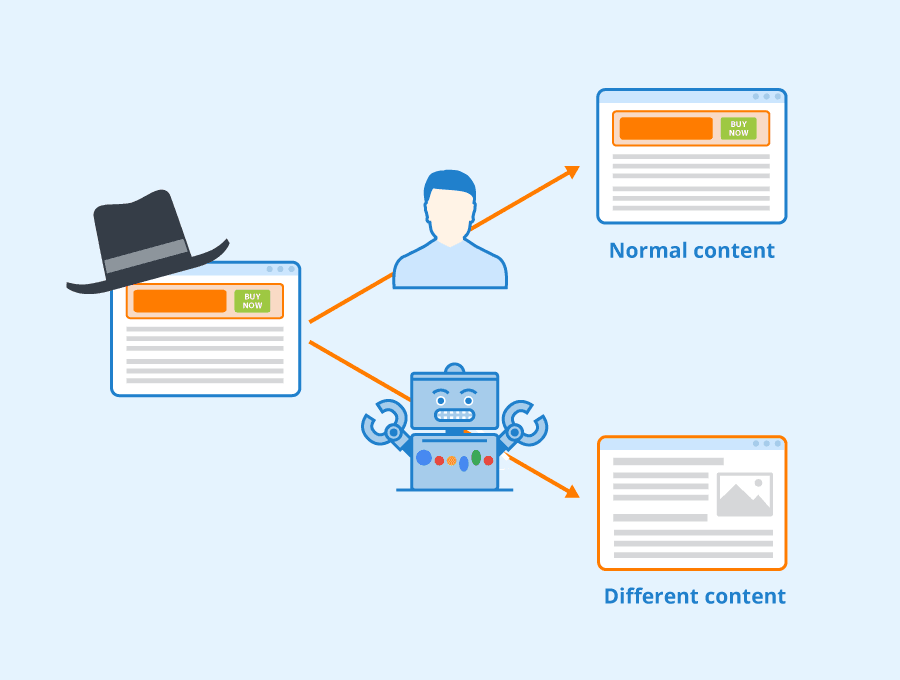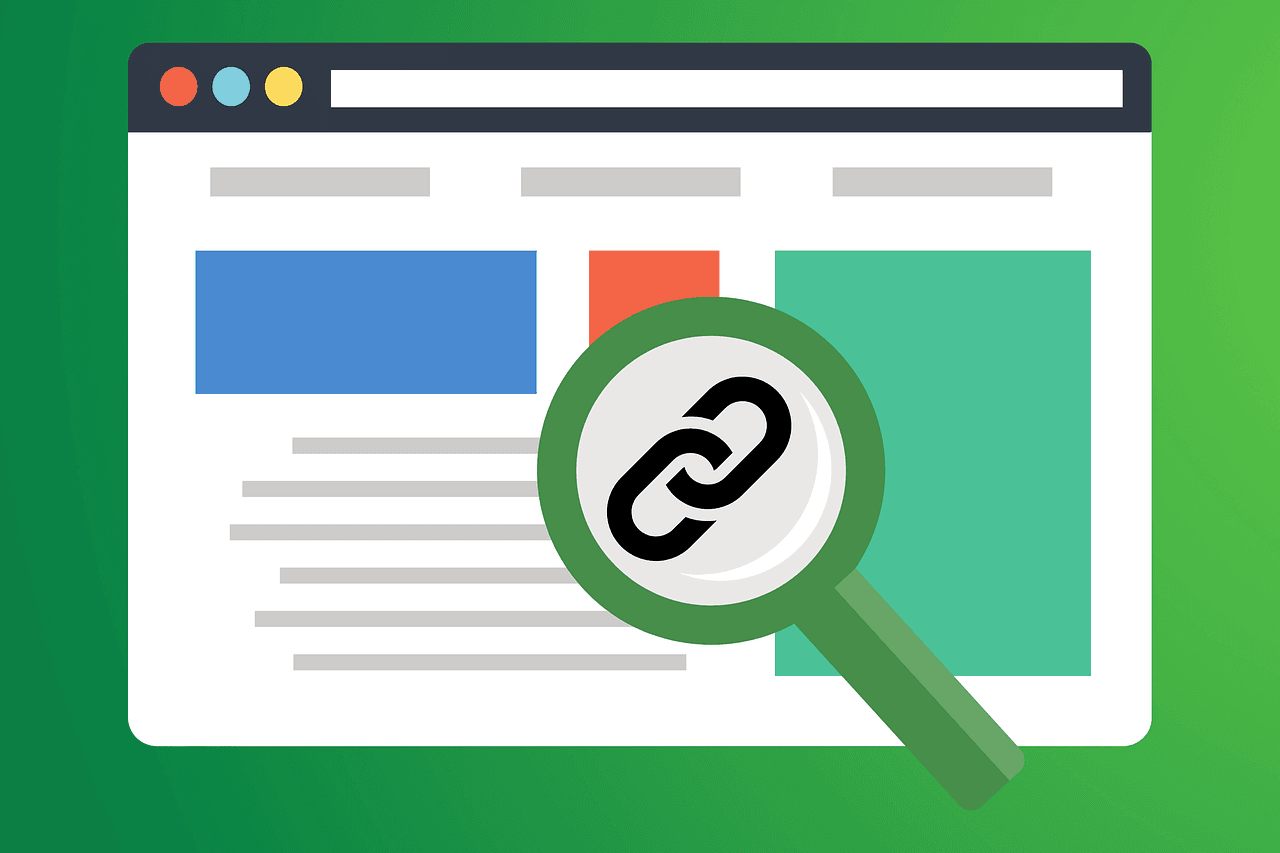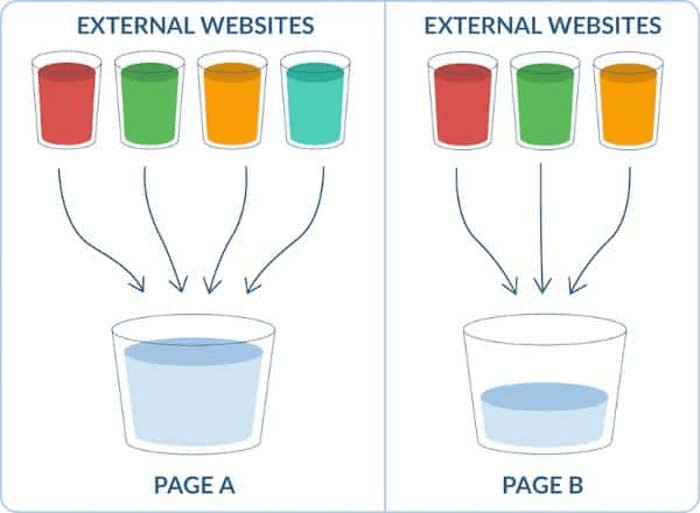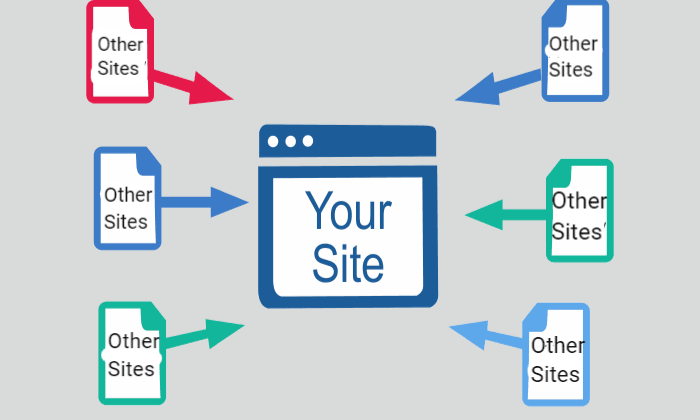SEO cloaking is a deceptive practice where websites show different content to search engines and users to manipulate rankings. While it may offer short-term gains, it violates search engine guidelines and can lead to penalties. Let’s delve into this topic together at Keyword Metrics.
What is Cloaking in SEO?
SEO cloaking refers to a deceptive practice where a website shows different content or URLs to search engines and human users. It’s a black-hat SEO tactic that manipulates search engine algorithms to improve rankings while providing an entirely different experience to visitors.
Although it may seem like a shortcut to rank higher, cloaking violates guidelines set by search engines like Google, potentially leading to severe penalties or even de-indexing.

How SEO Cloaking Works
Cloaking involves presenting tailored content based on who is visiting the site. Here's how it works:
- Detection of User-Agent or IP Address: The website detects whether the visitor is a search engine crawler (e.g., Googlebot) or a regular user.
- Content Variation:
- For Crawlers: Optimized, keyword-rich content designed to rank higher in search results.
- For Users: Completely different or irrelevant content, often not optimized for SEO or misleading in nature.
Common Cloaking Techniques
- HTML Cloaking: Showing search engines specific HTML content while showing users something else (like images or Flash).
- IP Cloaking: Delivering different content based on the visitor's IP address.
- User-Agent Cloaking: Customizing content depending on the browser or search engine crawler.
Why SEO Cloaking Is a Serious Concern
SEO cloaking is significant in SEO because it directly violates search engine guidelines. It is considered unethical and counterproductive for long-term success.
Consequences of Cloaking
- Search Engine Penalties: Google and Bing strictly penalize websites engaging in cloaking, often leading to:
- Lower rankings
- Manual penalties
- Complete removal from search indexes
- Loss of Credibility: Users lose trust in websites that engage in deceptive practices.
Real-World Example
A website for a travel company might display location-specific offers to users but show search engines unrelated, keyword-stuffed pages. Once discovered, the search engine may penalize the site, drastically reducing its visibility and traffic.
Tools to Detect and Prevent Cloaking
- Google Search Console: Use the "Inspect URL" feature to see how Googlebot views your content.
- Screaming Frog SEO Spider: Crawl your site to identify discrepancies in content served to users and bots.
- Sitebulb: Visualizes potential cloaking issues with side-by-side comparisons of crawler versus user views.
Pro Tips for Avoiding SEO Cloaking
While cloaking is tempting to manipulate rankings, legitimate strategies yield better, sustainable results.
Follow Search Engine Guidelines
- Always adhere to Google’s Webmaster Guidelines.
- Use structured data and canonical tags to ensure transparency.
Use Ethical Alternatives
- Dynamic Serving: Show different content to users and crawlers using the same URL but with different layouts or formats (e.g., desktop vs. mobile).
- Personalization Without Deception: Offer personalized content based on location or preferences without misrepresenting the page’s purpose.
Check for Accidental Cloaking
Sometimes, cloaking occurs unintentionally.
- Use tools like Screaming Frog or Google Search Console to verify that search engine crawlers and users see the same content.
- Regularly test your site's user experience across devices and regions.
FAQs About SEO Cloaking
Q: Can cloaking ever be used ethically?
A: No. Cloaking is explicitly against search engine guidelines, even if your intent is not malicious.
Q: How do I fix cloaking issues on my site?
A: Audit your site using tools like Screaming Frog or Google Search Console, then resolve discrepancies by ensuring uniformity in content for crawlers and users.
Q: Are there legal consequences for cloaking?
A: While primarily an ethical issue in SEO, cloaking can breach consumer protection laws in some cases, particularly if it misleads users.
Related Glossary Terms to Explore
- Black Hat SEO: Learn more about unethical SEO practices.
- Google Penalties: Understand the consequences of violating guidelines.
- White Hat SEO: Ethical techniques to improve rankings


